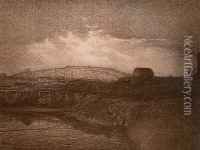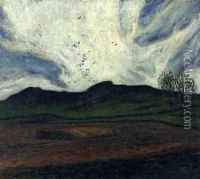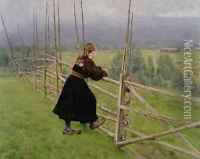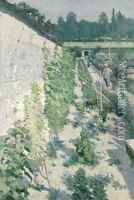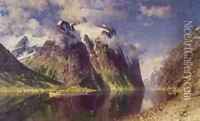Karl Nordstrom Paintings
Karl Nordström was a Swedish painter, born on 11 July 1855 in Tullstorp, Malmöhus County, Sweden. He is notable for his contributions to Swedish art, particularly in the late 19th and early 20th centuries, and is often associated with the Varberg School, a group of artists who worked in the Varberg area and shared a common interest in the landscape and light of the region.
Nordström began his artistic education at the Royal Swedish Academy of Arts in Stockholm, where he studied from 1875 to 1881. His early work was influenced by the Düsseldorf school of painting, characterized by detailed and realistic landscapes. However, his style evolved significantly over the years, transitioning through impressionism and eventually towards a more national romantic and symbolic expression, reflecting the broader shifts within European art at the time.
In the late 19th century, Nordström, along with fellow artists Nils Kreuger and Richard Bergh, formed the artist colony in Varberg. This group played a crucial role in the development of Swedish national romanticism, emphasizing the beauty and mystical qualities of the Swedish landscape. Nordström's work from this period is marked by a strong emphasis on light and atmosphere, capturing the unique qualities of the Swedish coast and countryside.
Nordström was also involved in the opposition to the conservative teachings of the Royal Swedish Academy of Arts, contributing to the founding of the Konstnärsförbundet (The Artists' Association) in 1886, which sought to promote more progressive artistic values and practices. This organization played a significant role in the modernization of Swedish art, advocating for artistic freedom and the importance of personal expression.
Throughout his career, Nordström exhibited widely, both in Sweden and internationally, and received significant recognition for his work. He continued to paint and exhibit until his death on 16 August 1923 in Stockholm. Today, Karl Nordström's paintings are held in high regard, and he is remembered as a pivotal figure in the transition of Swedish art from traditional realism to more expressive and national forms. His legacy is preserved in museums across Sweden, including the Nationalmuseum in Stockholm, where his contributions to Swedish art history continue to be celebrated.
